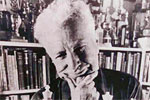


ChessBase 17 - Mega package - Edition 2024
It is the program of choice for anyone who loves the game and wants to know more about it. Start your personal success story with ChessBase and enjoy the game even more.
Indiana University of Pennsylvnia
Math 563 – Mathematical Statistics I
Fall 2007
Ask any United States Chess Federation (USCF) member about his or her "Elo;" you will likely get an immediate and accurate response. Now ask that same USCF member where the term "Elo" comes from. Something along the lines of, "I forget... someone told me what it stands for once, but I can't remember" is more likely than the correct response. Although the most widely used chess rating system in the world bears his name, few have anything more than a vague idea of how the system works while still fewer are aware of the statistician Dr. Arpad Elo himself.
A physicist by discipline, the Hungarian-born Elo was a fervent amateur chess player the greater part of his life. Performing at the master level, Elo won the Wisconsin championship eight times between the years of 1935 and 1961. In 1959 – having already served the USCF for twenty years – Elo was appointed chairman of the USCF rating committee; the following year the USCF adopted the revolutionary new rating system that he conceived. A decade later, in 1970, the World Chess Federation, better known as FIDE (Fédération Internationale des Échecs), also implemented the Elo system to track the relative strength of all masters worldwide. Today, nearly a half-a-century after inception, the Elo system very closely resembles the original form. Further, the Elo system has been applied to many other forms of pairwise competition including Scrabble, Massively Multiplayer Online Role-Playing Games (MMORPGs) such as World of Warcraft and various professional and collegiate sports.
|
|